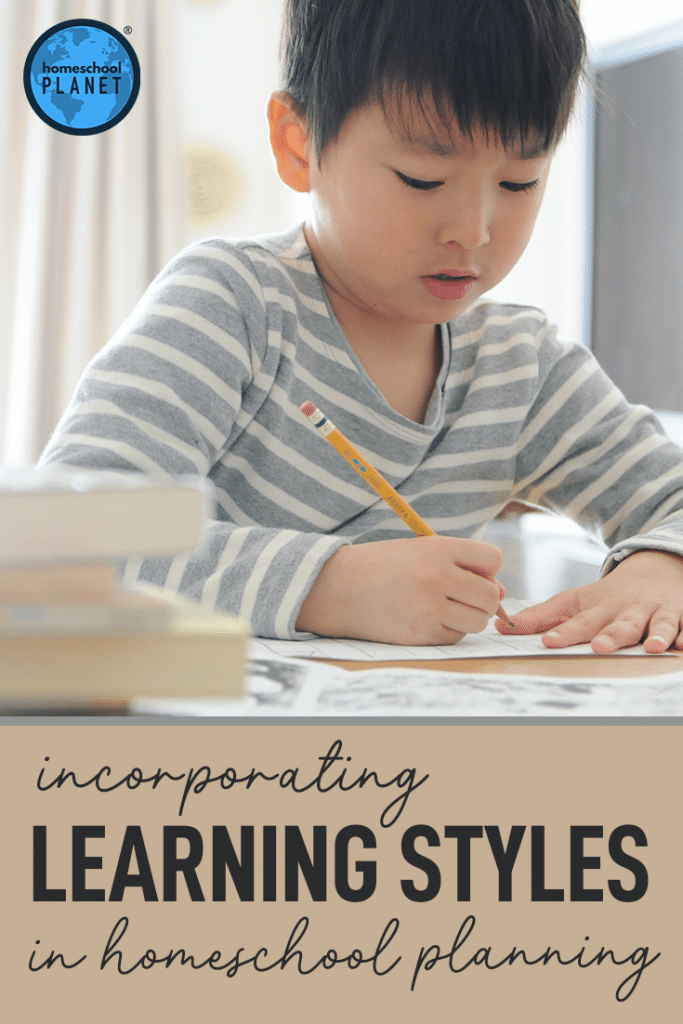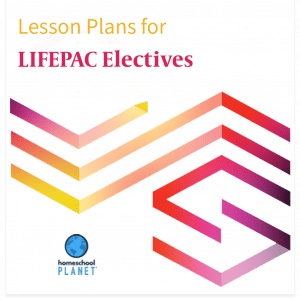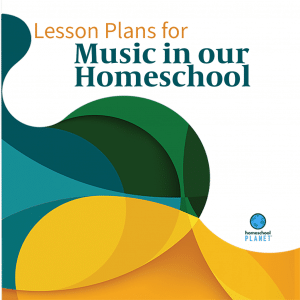How To Incorporate Learning Styles in Homeschool Planning
When it comes to homeschooling, one size definitely does not fit all. Every child has their own unique way of learning, and as a homeschooling parent, it’s important to understand and embrace these differences in order to create an effective and successful learning environment for your child. By incorporating different learning styles in homeschool planning, you can tailor your curriculum to better suit your child’s needs and ultimately set them up for academic success.

Understanding Different Learning Styles for Effective Homeschool Planning
When planning your homeschool lessons, it’s important to understand and incorporate your child’s learning style. Get to know your child’s learning style to tailor your homeschool lessons effectively. Visual learners thrive with charts, diagrams, and videos, so incorporating visual aids into your lessons can help them grasp concepts more easily. Auditory learners benefit from discussions, lectures, and podcasts, so including opportunities for them to listen and engage in conversation can enhance their learning experience. Kinesthetic learners are also called tactile learners. Both learn best through hands-on activities and experiments, so incorporating interactive activities into your lessons can help them retain information better.
You’ll want to learn how to utilize a variety of methods to accommodate different learning styles in your homeschool planning. Remember that every child is unique and may have a combination of the main learning styles, so it’s important to be flexible and adapt your teaching approach accordingly. The best way for most homeschool families is to incorporate a mix of visual, auditory, and kinesthetic activities into lessons. This allows you to create a well-rounded learning experience that meets your child’s individual needs. This approach can help keep your child engaged and motivated, leading to a more successful homeschooling experience for everyone.
By understanding and accommodating your child’s own learning style in your homeschool planning, you can create a more effective and enjoyable learning environment. Tailoring your lessons to fit your child’s particular learning style can help them succeed academically and foster a love of learning. Remember to be patient and open-minded as you explore different teaching methods and strategies that work best for your child. Each child is different, so it’s important to be willing to adapt and try new approaches to ensure that your homeschool lessons are engaging and effective.
Benefits of Incorporating Learning Styles in Homeschool Planning for Student Success
When you incorporate a variety of learning styles into your homeschool planning, you are providing an educational experience unique to your child’s way of learning. This is something that public schools struggle to do well. In your homeschool, you can provide the educational material that suits your family and create a rich learning environment that is more enjoyable and effective for everyone. By recognizing whether your child is a visual, auditory, or kinesthetic learner, you can tailor your homeschool methods to suit their preferences.
For example, if your child is a visual learner, using charts, diagrams, and visual aids can help them better understand and retain information. If your child is an auditory learner, incorporating discussions, audiobooks, and verbal explanations can enhance their learning experience. By adapting your homeschool teaching methods to match your child’s learning style, you can help them grasp concepts more easily and make learning a positive and rewarding experience.
Understand Learning Styles to Increase Motivation & Engagement
Understanding your child’s learning preferences can also lead to increased motivation and engagement in their studies across a variety of different subjects. When your child is actively engaged in their learning and feels motivated to succeed, they are more likely to put in the effort and time needed to excel academically. By incorporating different teaching methods that align with your child’s learning style, you can help them stay focused, interested, and eager to learn.
For example, if your child is a kinesthetic learner who thrives on hands-on activities, incorporating experiments, field trips, and interactive projects can keep them engaged and excited about learning. By tapping into your child’s natural learning tendencies, you can create a learning environment that is stimulating and conducive to their academic growth.
Teaching Methods That Match Your Child’s Learning Style
By incorporating different teaching methods that match your child’s unique learning style, you can help them retain information better and improve their overall academic performance. Children process information differently, so finding the right approach when young children can explore the different ways of learning allows an opportunity to explore lots of combinations of different learning styles. When your child is learning in a way that resonates with them, they are more likely to remember and understand the material being taught.
For instance, if your child is a visual learner, using flashcards, mind maps, and visual aids can help them remember key concepts and information. If your child is an auditory learner, incorporating podcasts, lectures, and group discussions can enhance their comprehension and retention of the material. By adapting your homeschool planning to suit your child’s learning style, you can create a more effective and personalized learning experience that sets them up for success.
Incorporating learning styles in homeschool planning often shows improvement in kids’ behavior. Helping find a child’s superpower in their unique learning style creates a type of learner that is confident, enthusiastic, and thriving because of their special way of learning. This results in being a tremendous help to homeschool parents navigating som many responsibilities in their home education journey.
Tailoring Homeschool Curriculum to Visual, Auditory, and Kinesthetic Learners
Homeschool Planning for the Visual Learner
When tailoring your homeschool curriculum to visual learners, consider incorporating visual aids like diagrams, charts, and videos. These tools can help reinforce concepts and make learning more engaging for students who thrive on visual stimuli. Providing visual learners with colorful and interactive materials can enhance their understanding and retention of information. Younger ages particularly enjoy picture books and older students will enjoy documentaries or video-based learning. You want to add time into your daily and weekly homeschool schedule to allow for time to enjoy visual learning through art appreciation, books, and infographic-type resources for subjects like math and science. Remember, not all visual learners are the same, so be open to trying different visual aids to see what works best for your child.
Homeschool Planning for the Auditory Learner
For auditory learners, include opportunities for listening to lectures, podcasts, and audiobooks. These resources can help auditory learners absorb information through listening and verbal instruction. Encouraging discussions, debates, and verbal explanations can also benefit auditory learners. Creating a supportive environment where your child can engage in conversations and listen to various forms of audio content can cater to their learning style effectively. As a homeschooling parent, it will be important that your homeschool curriculum choices support your family’s values as you may not always be able to listen to a specific topic.
Homeschool Planning for the Kinesthetic Learner
Utilize hands-on activities, experiments, and movement breaks for kinesthetic learners. These learners benefit from physical movement and tactile experiences to comprehend and retain information. Incorporating activities that involve building, creating, and exploring can help kinesthetic learners grasp concepts more effectively. Additionally, allowing for movement breaks throughout the day can help these learners stay focused and engaged. Remember that each child may use several of the various learning styles, so flexibility in your homeschool planning is key. Experimenting with different approaches and adjusting your curriculum as needed can help you create a personalized learning experience that best suits your child’s individual needs.
When it comes to your homeschool schedule, you’ll want to have a mix of short breaks between subjects for physical activity such as 5 minutes on the trampoline or a quick walk. Additionally, you will want to allow for extended project time that will be needed to create, build, and clean up from hands-on activities. Co-ops and learning communities are great for this type of learning and provide unique resources that help you provide a well-rounded education for your child’s specific needs and interests.
Creating a Flexible Schedule to Accommodate Different Learning Styles in Homeschooling
When creating a homeschool schedule, it is important to consider your child’s preferred learning style and rhythms. Every child is unique and may have different ways of absorbing information and there may be better times in the day that provide optimal learning. Be open to adjusting your schedule to accommodate these different learning styles. Whether your child is a visual learner, auditory learner, or kinesthetic learner, tailor your schedule to incorporate activities that are suitable for their grade level and their individual learning style while being sensitive to when to do certain subjects.
Some practical strategies for different styles of learning include:
- Allowing for flexibility in your daily routine to provide for the specific learning needs of your child. Some children may thrive in a structured environment with set times for each subject, while others may benefit from a more relaxed and fluid schedule.
- Encouraging your child to participate in the planning process to bring a teamwork approach to learning and curriculum choices. By involving them in the decision-making, you can create a schedule that works best for their learning style.
- Embrace the diversity of learning styles in your homeschool environment and adjust your schedule accordingly.
By being mindful of your child’s individual preferences and adapting your schedule and teaching style to accommodate them, you can create a more effective and engaging learning experience for your child.
Homeschool Planet allows you to change your schedule to meet the needs of the individual student and allows you to see how everything lines up when planning for multiple students – each with their own unique learning styles.
Reading and Writing In The Modern Homeschool Age
Discovering your child’s preferred learning style can make homeschooling more engaging and effective. By understanding whether your child is a visual, auditory, or kinesthetic learner, you can tailor your reading and writing activities to better suit their needs. For visual learners, incorporating various reading materials such as books, online articles, and even audiobooks can help them absorb information more effectively. Auditory learners may benefit from listening to stories being read aloud or discussing what they have read with you. Kinesthetic learners might enjoy writing exercises that involve hands-on activities, such as using manipulatives or acting out scenes from a book.
When it comes to writing exercises, there are a variety of ways to cater to different learning styles. For traditional pen-and-paper assignments, visual learners may enjoy creating colorful mind maps or diagrams to organize their thoughts. Auditory learners could benefit from dictating their stories aloud before writing them down. Kinesthetic learners might prefer typing on a computer or using interactive writing tools to engage with the material in a more hands-on way. Remember to be flexible and adapt your teaching methods to best suit your child’s individual learning preferences. By incorporating different methods of reading and writing into your homeschooling routine, you can create a more dynamic and personalized learning experience for your child.
Find Your Homeschooling Style
In conclusion, understanding and incorporating different learning styles in homeschool planning can greatly benefit student success and create a homeschool style that is unique to your family. By tailoring the homeschool curriculum to appeal to visual, auditory, and kinesthetic learners, parents can create a more engaging and effective learning environment for their children. Flexibility in scheduling is key to accommodating these diverse learning styles, allowing students to thrive in their own unique way.
In the modern homeschool age, where resources and technology are abundant, there are endless opportunities to customize the learning experience for each child. Reading and writing remain fundamental skills, but with the right approach, they can be taught in a way that resonates with each student’s preferred style of learning.
By embracing the concept of different learning styles and incorporating them into homeschool planning, parents can empower their children to reach their full potential and excel academically. So, whether your child is a visual learner who thrives on colorful visuals, an auditory learner who absorbs information through listening, or a kinesthetic learner who learns best through hands-on activities, there is a way to tailor the homeschool experience to suit their individual needs.
Empower Your Child To Reach Their Potential
In the end, the key to successful homeschool planning lies in recognizing and embracing the diversity of learning styles and using this knowledge to create a personalized and enriching educational journey for your child. By doing so, you can make learning a fun and rewarding experience that sets the stage for a lifetime of academic success.





